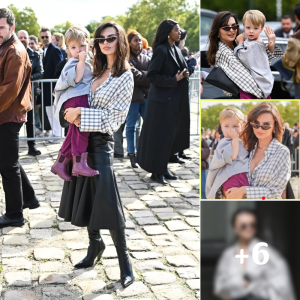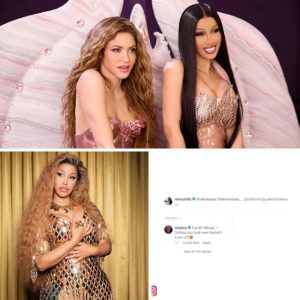We’re heading to Dunkin’ — and we’re taking Shakira’s purple Lamborghini.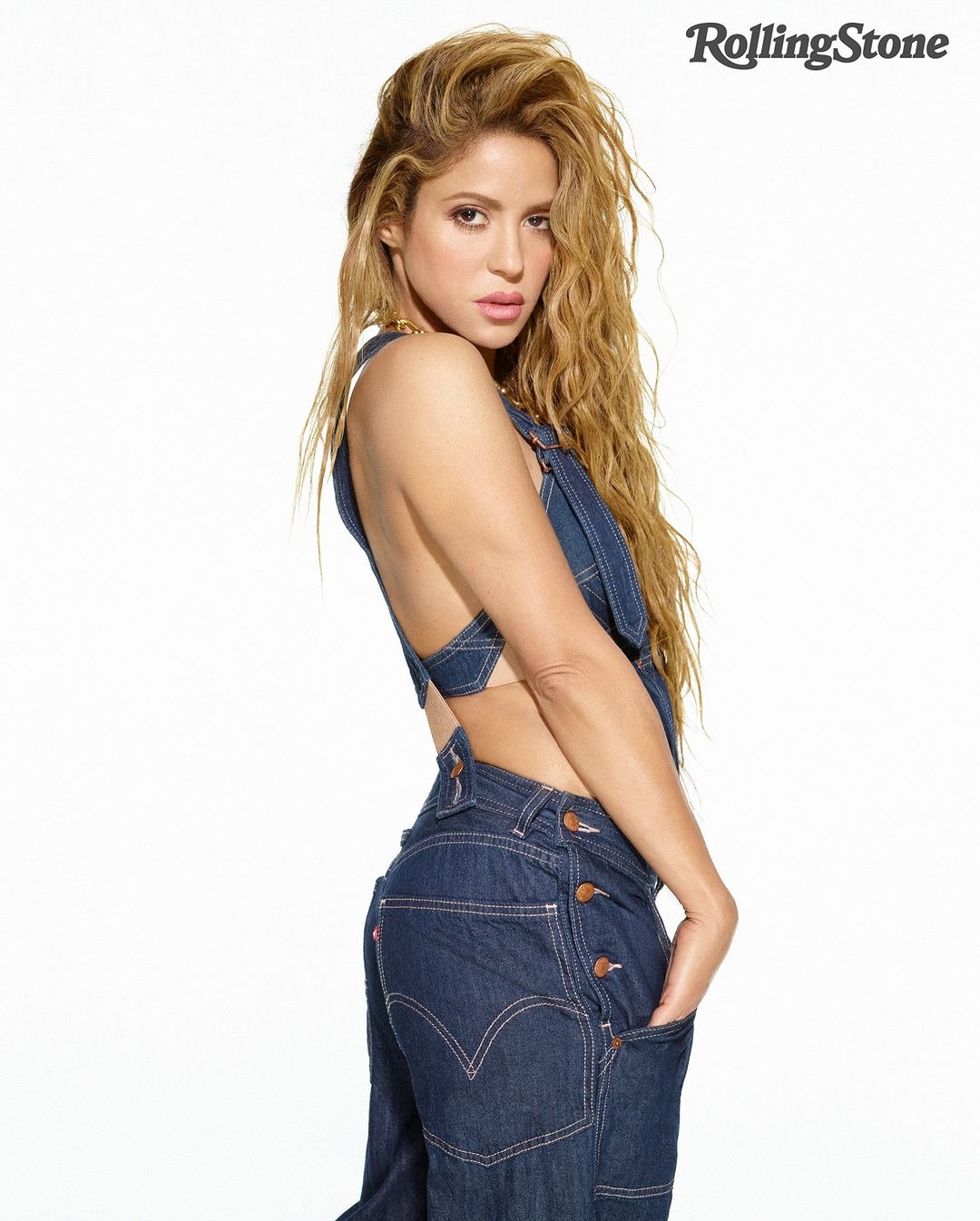
It’s an airless, parched afternoon in Miami, and we’ve just left the Sony Music offices, where Shakira took a bunch of calls and meetings. Now, she’s got some free time before she has to pick up her kids at school, so we’re in the Lambo — easily the flashiest car Shakira’s ever owned: “There’s nothing subtle or chic about it,” she chirps happily. The interiors are tricked out in Hulk-bright neon green because it’s a color one of her sons liked. Sometimes, if she’s running errands with them, she relies on her modest Toyota Sienna. But often, she’s out in this unapologetic spectacle of a ride, zooming down the street like she’s doing now, her security guard driving in another vehicle behind her, trying to keep up.
As she heads toward the counter, there’s a rustle as a few customers swivel around: Did Shakira, the pioneering, chart-topping, belly-dancing powerhouse from Colombia, who’s brought her instantly recognizable, often imitated voice to some of pop’s most beloved staples, really just saunter into this specific Dunkin’? Could that actually be the Shakira who graced nearly every household television as a judge on The Voice, as a performer at the 2020 Super Bowl halftime show, and as a Video Vanguard Award winner at the 2023 VMAs? Is everyone chanting, “Shakira, Shakira,” in their heads right now?
Some people seem to clock her and confirm immediately: Yes, duh, that is indeed Shakira, the fucking superstar and global icon, widely considered the most successful female Latin artist of all time, with 95 million records sold over her three-decade career, getting ready to ask for three chocolate doughnuts and an extra-hot coffee. Most of the crowd at the Dunkin’ admires from afar, mouths slightly agape, nerves too jittery to go up and say hi.
The musclehead offers to pay for Shakira’s order, but she politely declines. Finally, he leans in closer and shoots his shot: “Here, take my number,” he says, holding his phone toward her hands. Shakira breaks into a grin and gestures toward her creative partner and choreographer Maite Marcos, who’s standing nearby, and suggests that she take the phone number instead.
And yet, if you’d bumped into her two years ago, you would have found Shakira during her absolute worst moment, a period so bad it almost shattered an icon whose tenacity and longevity has made her seem indestructible. She’d just been pummeled by a wave of heartbreak and loss, by far the most intense pain she’s ever been through. “The suffering I felt was probably the greatest I had ever experienced in my entire life, and it kept me from functioning at times,” she says. “It felt like someone had stabbed a hole in my chest. And the sensation was so real, almost physical. I physically felt like I had a hole in my chest and that people could see through me.”
Around then, her then-90-year-old dad — who’s also her best friend — flew in from Colombia to check on her and suffered a horrific fall. At one point, doctors told Shakira he was probably going to die; thankfully, he pulled through and is recovering after six surgeries. At the same time, a complicated legal case, which opened in 2018 when Spanish prosecutors accused Shakira of evading roughly €14.5 million in taxes, ramped up and made its way into headlines. For months, the possibility of a trial loomed over her. (Last November, she settled the tax case and agreed to pay a €7.3 million fine, along with a €432,000 payment to avoid a prison sentence. In a statement, she said she’d made the decision “with the best interest of my kids at heart, who do not want to see their mom sacrifice her personal well-being in this fight.”)
“When it rains, it pours,” she says now, thinking of that gut-wrenching period. “It was crazy, how many things I had to deal with at the same time.”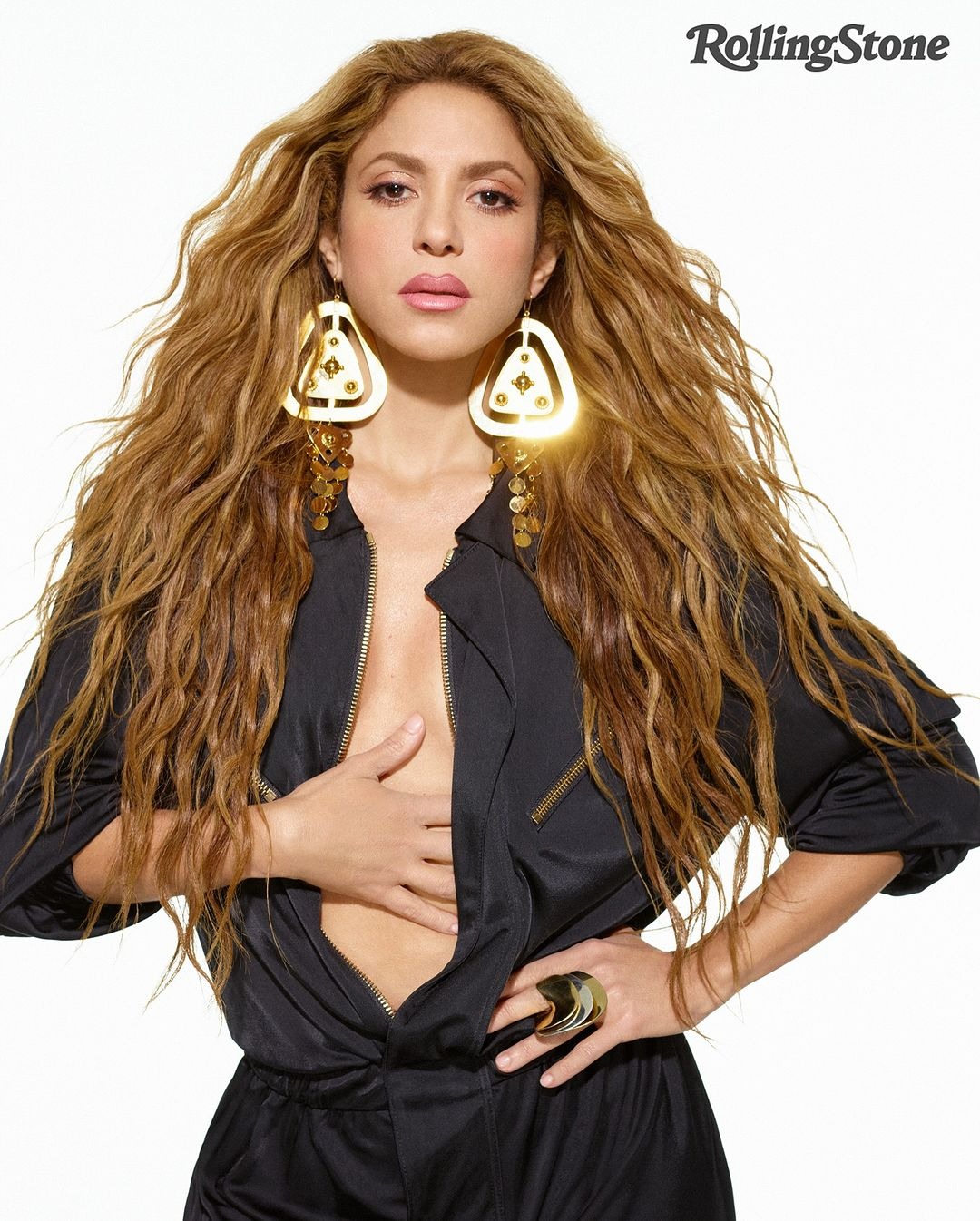 But as bad as it was, despite all of the heart-pulverizing grief and agony, there were signs early on that she wasn’t just going to roll over and crumble. Will.i.am, her close friend since 2005, says that in early 2022, they had plans to shoot a video in Barcelona for “Don’t You Worry,” Shakira’s collaboration with the Black Eyed Peas and David Guetta. Just before the shoot, which was going to be outside, Shakira called him and asked to move it inside. She didn’t say why, just stressed that she didn’t want to be outdoors. Will.i.am immediately had her back: “I was like, ‘Look, we gotta move this video indoors on a green screen.’ And then everybody was like, ‘Green screen? But we’re set up for the outside!’ I was like, ‘I don’t care what you guys say.’ ”
But as bad as it was, despite all of the heart-pulverizing grief and agony, there were signs early on that she wasn’t just going to roll over and crumble. Will.i.am, her close friend since 2005, says that in early 2022, they had plans to shoot a video in Barcelona for “Don’t You Worry,” Shakira’s collaboration with the Black Eyed Peas and David Guetta. Just before the shoot, which was going to be outside, Shakira called him and asked to move it inside. She didn’t say why, just stressed that she didn’t want to be outdoors. Will.i.am immediately had her back: “I was like, ‘Look, we gotta move this video indoors on a green screen.’ And then everybody was like, ‘Green screen? But we’re set up for the outside!’ I was like, ‘I don’t care what you guys say.’ ”
When the shoot finally did happen, Shakira, Will.i.am says, showed up “a trillion percent,” performing with everything she had. “The last day of the video is when she tells me what she’s going through with her ex,” he says. She told him that if they’d shot the video outside, paparazzi might have made things difficult. “I’m like, ‘You are a different breed of people,’ ’’ he says. “[Some] people would have found any excuse to not work. But she muscled through, spirit on high, vibes on high.”
It felt like someone had stabbed a hole in my chest. The sensation was so real.
After that, he made it a point to keep making sure she was OK. “She [is] superhuman, but even superhumans need, like, ‘Hey, checking in on you. Is everything all right?’ ” Will.i.am sent her texts and voice notes with prayers. “She went through a lot, one [crisis] after another. Boom, boom, boom.”
“You don’t know the maximum relief I felt. It was like …” She lets out a giant exhale. “Relief. And then I remember my manager at the time telling me, ‘Please change the lyrics.’ Of course, I was trying to calculate the possible contingencies and the risks, but I said, ‘I’m an artist. I am a woman. And I’m a wounded she-wolf. And no one should tell me how to lick my wounds.’ ” 
Even she was surprised by how gigantic “Bzrp Music Sessions, Vol. 53” got. “I started to see that my fans were there for me,” she says. Something about its raw-nerve energy, the bloodletting of it all, energized the masses around the world and shot the song to Number One on Spotify’s Global 200 chart, collecting 3 billion streams in the process. “We’re in a society that’s used to seeing women confront pain in a submissive way, and I think that’s changed,” Shakira says. She was especially excited that the song charted at the same time that Miley Cyrus’ “Flowers,” an anthem of self-love and independence after a breakup, was blowing up: “We were both thinking the same thing, and the reaction was similar.”
“Bzrp Music Sessions, Vol. 53” went on to win Song of the Year and Best Pop Song at the Latin Grammys in 2023, and became a cornerstone of her album Las Mujeres Ya No Lloran, which she released this March. The record, her first in seven years, hit the top of Billboard’s Latin charts and is still riding high. People hailed this chapter of her career as a comeback, a homecoming, a victorious return. And the momentum hasn’t stopped: Now, Shakira is getting ready to launch a tour that kicks off in November and winds its way through arenas in North America before reaching the rest of the globe. It’s her first since 2018. “I think this is going to be the biggest in my career so far, the most extensive, with the most range. It’s also going to be the longest,” she says, noting that her concerts usually clock in at 90 minutes — she sees this one going on for a little over two hours.
To Will.i.am, Shakira’s latest act is particularly impressive viewed through the lens of the ever-changing pop cycle. “It’s one thing to be like, ‘Yeah, I’ve been here for a minute,’ and you’re not being played on Top 40 or you’re just like a legacy act,” he says. Shakira is moving differently: “She’s competing. She’s not just flexing her legacy. It’s like, ‘I’m out here out-punching, out-swinging, out-basketmaking, outperforming my old self and new artists.’ ” Martin points out that Shakira’s the rare artist who’s been a gigantic star her whole career: “I’ve always seen her thrive. In my pantheon of great people, she’s never really left for a long, long time.”
But Shakira’s real triumph is less about topping charts or beating the competition and more about something deeply human — about finding the inner mettle that lets you keep moving, even when it feels inconceivably hard. And she didn’t just flourish as an artist; she discovered a new version of herself, particularly impressive in an industry that constantly tells women their best years are behind them. “In finding this freedom, I also found myself,” she says. “This has been a journey back to myself, and the way there was through my music. I’m in a moment where the worst has happened, and this process woke up a new sense of autonomy and independence in me.”
THE FIRST TIME I meet Shakira, we’re in the studio where she recorded part of Las Mujeres Ya No Lloran. She’s handling a few calls before we sit down to talk, speaking in Spanish at warp speed and discussing what sounds like serious business dealings — until I catch the words “tae kwon do.” 
It turns out, she’s planning the afternoon for her kids, Milan, 11, and Sasha, 9. They’re wrapping up after-school activities and then heading to the studio to record a children’s album put together by the music school they attend. Sasha is going to sing, and Milan is going to play the drums. Shakira enrolled Milan in lessons after her friend Penélope Cruz sent her a video of her own son, whom Shakira calls a talented percussionist. “I was like, ‘I need to get Milan in lessons!’ ” she says. Shortly after, she shared a video of Milan at the drums with Alejandro Sanz, her close friend and collaborator on hits like “La Tortura” and “Te Lo Agradezco, Pero No.” “Then he put his son in lessons too!”
She had imagined a trade-off, where she’d put her career on pause for a few years and support her partner’s soccer commitments. But eventually, they were going to move back to the U.S. “The plan was always that when my ex retired from professional soccer, we’d go to the States and live there and finish raising our kids there, because of all the sacrifice I’d made all those years accompanying him to play. The idea was to come here, but that moment coincided right with the separation.”
She pauses for a second. “In the end, the plans all come true. Just in a different way.”
An intercontinental move, she admits, was completely nerve-wracking, especially because she worried about how well her kids would adjust. “I’ll never forget, the first day of school, I’d been super nervous, and when I picked them up, they jumped on me and hugged me and said, ‘We love it!’ ” Shakira remembers. “My eyes had been as wide as saucers all day, waiting for the worst news, and they came out running and jumping with joy.” She’s intensely close to Milan and Sasha and picks up and drops them off most days. Often, she’ll rearrange travel plans to put them to bed at night.
Still, finding her own place and her own set of friends in a new city hasn’t been so easy, given that she’s one of the biggest celebrities on the planet. “When kids find a good environment at school, it’s just easy. Meanwhile, us adults also have to find friends, but there’s no school I can go to at my age,” she says, laughing. Instead, she’s gotten tight with some of the moms at the kids’ school, including a few who are also from Barranquilla. When she has time, she’ll try to get together with other artists; she might call up Rauw Alejandro or Ozuna and try to get them to go wakeboarding with her. She’s into a lot of water sports these days, a change from Barcelona, where she used to play a lot of tennis.
“It was up to me, in that moment, to go from radio to radio, station to station, and convince and persuade the gatekeepers, the guys who controlled the music industry,” she says. “They’re the ones that would say, ‘Yes, you,’ ‘Your music will play on my station,’ ‘Not you.’ It was hard, and it was difficult. More doors would close, a few would open after banging on them and insisting. It was arduous, arduous work.”
If that weren’t challenging enough, Shakira then set her eyes on the English-language market. These days, the idea of a crossover feels outdated; artists from Bad Bunny to Karol G have proven the massively global appeal of music in Spanish. But Shakira points out how wildly different the industry was back then, and she also says she wanted to become fluent in English. (While touring in Latin America, she learned Portuguese so she could play in Brazil; she also speaks French and Italian.) “I wanted to write in English, to think in English, to feel in English, because I felt that was my way of broadening my horizons,” she says. The first time she wrote a song in English, she armed herself with a thesaurus and a Leonard Cohen book. “This Colombian girl who had just started singing all of a sudden appears on the scene [in the U.S.], and it was this exhilarating moment. It was so strange, and that’s where I saw I was capable of doing it.”
She laughs, but she’s touching on something deeper. “This happens, I’ve noticed. When you leave a relationship of many years, there are things about yourself that seem to have been lost along the way,” she says. “There’s things about yourself that you change for the other person or give up. When that relationship breaks down, you feel like you’re left with nothing and you have to heal, search for yourself, and travel back toward the center of yourself.” 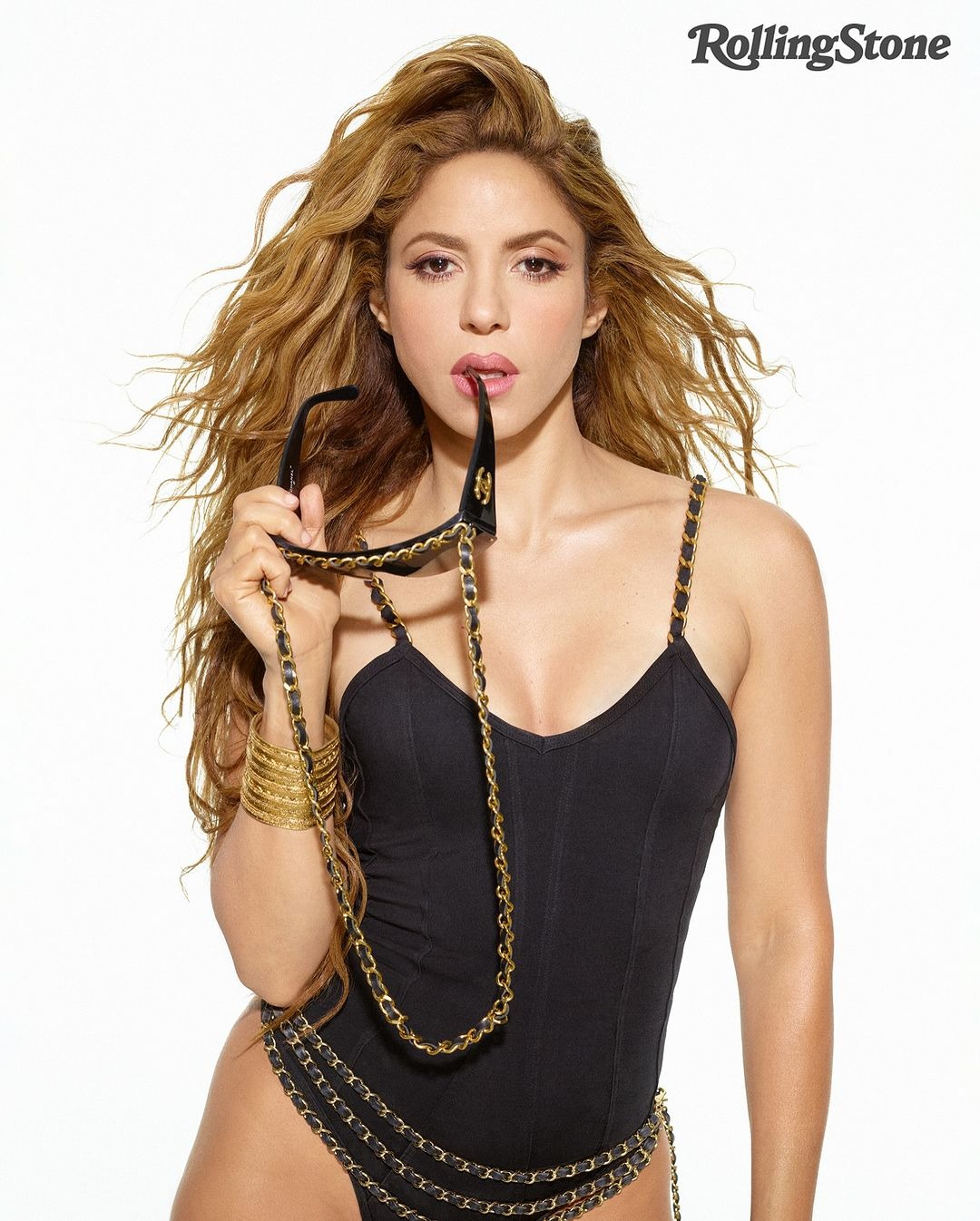
It’s kind of a surprise to hear an artist as big as Shakira name that feeling, the way some relationships can be endlessly nurturing and comforting but also involve compromises that make the older versions of yourself feel further away — even if that older version is a superstar who everyone knows. Sometimes it’s hard to see how much of yourself gets chipped away until you come up for air, and adding motherhood, as transformational and transcendent as it can be, might only make things more complicated. I tell her that in my own experience, it seems like a constant, exhausting balance and negotiation, and I wonder out loud if she felt like she was making sacrifices at the time.
“When we’re mothers, we never dial it down,” she says softly. “We can keep working, but our commitment as mothers is nonnegotiable. Sometimes achieving a balance is difficult, right? How much time do you dedicate to yourself, to your work, to the children? But children always come first and what consumes us the most.” Still, that’s not something she’d trade for anything; she’s the kind of mom who parents loudly. She took Milan on tour when he was months old, and now, the kids are her plus-two at events and awards shows. At the Latin Grammys, they were filmed in the crowd, cheering for their mom as she performed a medley that included “Bzrp Music Sessions, Vol. 53.”
Her feelings on motherhood have a lot to do with this entire journey she’s been on. “I never had to rely on myself as much as I have fighting for my survival and the survival of my kids,” she says. There are lessons for them she’s wanted to emphasize. “I think they’ve seen their mother cry. I think they’ve seen her celebrate. I think they’ve seen her laugh. I think they’ve seen her work tirelessly,” she says. “And that’s it: I want to show them that life isn’t linear. It’s not how people picture it in the movies. Things don’t turn out the way we want them to and you have to deal with disappointment. That’s part of the human condition. It’s why we’re here.”
My accent is back, thank God. I got my swag back. And I got my sexy back.
And now, after so much time spent searching for all those lost parts of herself, I ask her what she ended up finding.
“Perspective,” she says slowly. “The ability to differentiate what’s important from what’s not so important. I found …” She trails off and then bursts out laughing: “My accent! My Caribbean accent is back now that I’m out of Spain.” Her accent was more neutral when she was living in Barcelona, where she also picked up a good bit of Catalan. Now, in Miami, it’s reverted back to the costeño melody of the port city she grew up in. “Now I’m hanging out with Barranquilleras from my kid’s school and surrounded by Cubans, Puerto Ricans, Dominicans, Colombians. Yeah, my accent is back, thank God.”
She attended her first Met Gala a few days ago. Though she’d been invited before, she could never make the trip work from Barcelona. Her inaugural appearance was full of encounters with people she’d loved and admired from afar. She was particularly excited to finally meet Ed Sheeran face-to-face. “We’ve even made music together, we’ve done stuff together, but we’ve never been able to finish because we haven’t seen each other,” she says. “When I saw him, I hugged him like I’d known him my entire life.”
But not all fans loved the album’s pop turns, wishing instead that Shakira had put the unvarnished rock energy of Pies Descalzos or Dónde Están Los Ladrones into this project. When I ask what she thinks about people who wanted a different Shakira here, she pushes back, noting the diversity of sounds on the record. “One of the things I like the most about this album is that it actually evokes other stages of my musical journey, like the girl with the dark hair and the leather pants and bare feet. So there are songs like ‘Cómo, Dónde y Cuándo’ that are very close to my essence and who I’ve always been musically, but it clearly shows an evolution in the way I feel.” She highlights a few others: “ ‘Tiempo Sin Verte,’ ‘Última,’ even, or ‘Acróstico’ are singer-songwriter songs, some just made of piano and voice.”
Plus, in addition to letting her bounce around the charts, such a big-sounding pop approach gave her a lot of room to experiment. “It gives me so much flexibility to go in any direction I want. I can do Afrobeats, I can do reggaeton, I can do ska or EDM. There’s something about the purity of just an electric guitar and an electric bass and drums that takes me back to the type of music that I’ve always been a huge fan of, those rock bands that made me fall in love with music.”
During the tour meeting, Shakira reads a few different things she pulled together for inspiration: There’s a long text about the power of the she-wolf that she has in front of her. She also goes through a few statistics about the economic power of women and, specifically, the contributions of Latinas. The goal of the show, she says, is to empower people, to remind them that despite whatever trials they go through, they can come out the other side.
She keeps brainstorming different stage designs and ways to get closer to the audience during the show, as a way of deepening a connection she’s felt with them from the beginning of this project. “My fans have been having a dialogue with me: I’ve spoken and they’ve listened, and they speak and I listen and learn from their experiences. Because just like me, there’s a million she-wolves in the world, getting ready to go into battle and finding their way.”
Other details have been on her mind: the visuals, the wardrobe, her entrance. At one point, someone brings up a fluffy pink dress she wore during her Sale El Sol tour, and she cringes slightly, dismissing it as cheesy. “My path is a path made of cheese,” she jokes. Someone on her team assures her that she’s now in her fashion era, and on some level, there does seem to be an extra focus on heightening the show. During the meeting, she references Beyoncé’s Renaissance tour and Taylor Swift’s Eras tour, noting moments she loved during both. Later, she tells me she recently spent hours in the studio going through the songs that might make it on the setlist, analyzing “the key and the speed and the arrangements.” “Preparing a show is one of the most intricate, complex things I can do as an artist,” she says.
She has one other inspiration she’s turned to for the tour. Her manager pulls up a clip of Issa Rae receiving the Emerging Entrepreneur Award at the 2019 Women in Film Annual Gala. In the speech, Rae explains that she’s channeling some of her favorite rappers and throwing humility out the window. Her voice fills the office as everyone listens in: “I’m closing all doors behind me, so if you didn’t make it in, oops, your bad. Figure it out. Entrepreneur means ‘I did that shit by myself.’ ” Shakira starts howling with laughter and recites Rae’s final line along with her: “In conclusion, entrepreneur till I die. I deserve this, bye!”
